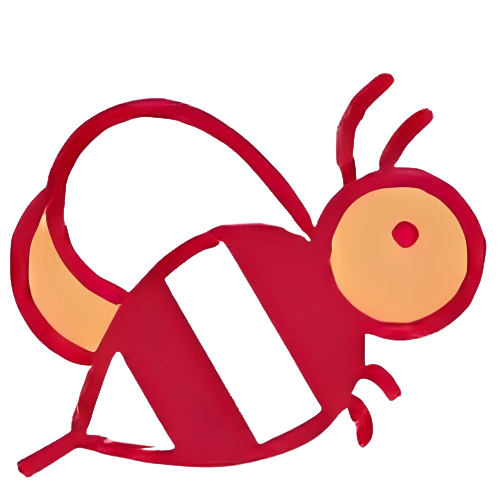


As the world celebrates Diwali, NASA joins in with a breathtaking image of one of the Milky Way's most spectacular star-forming regions, the Omega Nebula. This vibrant and fiery image, captured by the Hubble Space Telescope, showcases the beauty and secrets of evolution within the nebula, including the presence of a hidden young star cluster. Even astronaut Sunita Williams, currently aboard the ISS, shared Diwali greetings and reflected on the festival's themes of hope and renewal.
NASA Celebrates Diwali with Breathtaking Image of Milky Way's Omega Nebula
As the world celebrated Diwali, the festival of lights, NASA shared a stunning image from the Hubble Space Telescope showcasing the Omega Nebula, one of the Milky Way's most vibrant star-forming regions. This celestial spectacle, resembling a vibrant fireworks display, embodies the themes of hope, renewal, and the triumph of light over darkness associated with Diwali.
The Omega Nebula: A Stellar Tapestry
The Omega Nebula, also known as the Horseshoe Nebula, is located in the constellation Sagittarius, about 6,500 light-years away from Earth. This vast cosmic cloud of gas, dust, and star clusters is a region of intense star formation. The Hubble image captures a breathtaking panorama of gaseous tendrils, glowing clouds, and countless young stars.
A Hidden Star Cluster Unveiled
Within the Omega Nebula, astronomers have discovered a previously unseen young star cluster, hidden amidst the swirling cosmic tapestry. This cluster, known as NGC 6164, is estimated to be around 2 million years old and contains hundreds of stars in its infancy.
A Cosmic Greeting from Space
Astronaut Sunita Williams, currently aboard the International Space Station, extended Diwali greetings from her unique vantage point. She shared a heartwarming message, reflecting on the festival's themes of hope and renewal and the cosmic parallels it holds.
Top 5 FAQs on the Omega Nebula and Diwali
1. What is the significance of the Omega Nebula's resemblance to a horseshoe?
The Omega Nebula's central region forms a striking horseshoe shape, which earned it its nickname. This shape is created by two clouds of ionized gas that are being pushed away from each other by the intense radiation from nearby young stars.
2. How big is the Omega Nebula?
The Omega Nebula spans approximately 15 light-years in diameter, making it one of the largest star-forming regions in the Milky Way.
3. What is the origin of the Diwali festival?
Diwali, also known as Deepavali, is an ancient Hindu festival that celebrates the victory of good over evil and the triumph of light over darkness. It is traditionally observed with fireworks, lights, and prayers.
4. How does NASA's image of the Omega Nebula relate to Diwali?
The Omega Nebula image, with its vibrant colors and celestial spectacle, echoes the themes of light and renewal associated with Diwali. It serves as a cosmic reminder of the enduring nature of light and the hope it brings.
5. What other celestial events are associated with Diwali?
The festival of Diwali is traditionally celebrated during the Hindu month of Kartik, which coincides with the new moon phase. This alignment allows the stars to shine brighter, further illuminating the night sky and symbolizing the festival's victory of light over darkness.

A recent consumer study has found multiple brands of soft contact lenses in the U.S. to contain "forever chemicals" that can be harmful to both the body and the environment. The study, conducted by the nonprofit organization Environmental Health Sciences, tested 18 varieties of popular contact lenses and found all of them to contain markers for PFAS. Brands such as Acuvue, Alcon, and CooperVision were among the list of affected products. This news serves as a cautionary lesson on the potential risks of overusing contact lenses.

On the birth anniversary of Dr. APJ Abdul Kalam, the ‘Missile Man’ of India, tributes pour in on social media celebrating his life, vision and impact. A visionary scientist, inspiring leader and true patriot, Dr. Kalam's humility, compassion and constant interaction with students continue to inspire generations. His tireless efforts in defense, science and youth empowerment have strengthened India's path towards self-reliance and his legacy continues to motivate young minds to dream big and work hard for the nation.

Recent studies have found that extreme heat, particularly when combined with high humidity, can have a significant impact on mental health. A study in India showed that when wet bulb temperature exceeded 27°C, the probability of reporting severe depression increased by 0.5%, even when the temperature was slightly lower. This finding is consistent with global reviews that have linked high temperatures to mood disorders, increased hospital admissions for psychiatric conditions, and even elevated suicide risk. The Lancet has also published evidence that rising temperatures worldwide are a growing threat to emotional and cognitive health.

In a meeting with university officials in Udaipur, Rajasthan Governor Hari Bhau Bagde stressed the importance of incorporating India's ancient knowledge traditions into academic research. He highlighted the deep repository of knowledge in India since ancient times and urged scholars and scientists to draw upon this tradition in their work. Bagde also suggested making ancient texts available in university libraries for study and research purposes, in order to shape the intellectual abilities and love for the nation among the younger generation.

John Clarke, Michel H. Devoret, and John M. Martinis have been awarded the 2025 Nobel Prize in Physics for their pioneering research into quantum mechanical tunnelling. Their discovery has opened new possibilities for quantum technologies, and will be formally presented on December 10, the anniversary of Alfred Nobel's death. This announcement follows the tradition of recognizing transformative contributions to science, and the award carries a prestigious prize of 11 million Swedish kronor.

The US-Japanese trio of Mary E Brunkow, Fred Ramsdell, and Shimon Sakaguchi have won the 2025 Nobel Prize in physiology or medicine “for their discoveries concerning peripheral immune tolerance". Through their research, they have shown how the immune system is kept in check and why serious autoimmune diseases do not affect everyone. Sakaguchi found a new class of T cells, while Brunkow and Ramsdell discovered the explanation behind a specific mouse strain's vulnerability to autoimmune diseases. Together, they have significantly advanced our understanding of immunology and autoimmune diseases.

Indian astronaut Shubhanshu Shukla, who recently completed a 20-day space mission, shared his insights and experiences at the convocation ceremony of Dr. APJ Abdul Kalam Technical University. He highlighted the importance of patience, focus, and the inevitability of change in achieving success, and urged the graduating class to actively contribute to shaping a fearless and ambitious India.

The Regional Meteorological Centre (RMC) in Chennai has issued a weather alert for parts of Tamil Nadu, with thunderstorms and light to moderate rainfall expected on Saturday. The alert was issued due to the strengthening of a cyclonic circulation in the Bay of Bengal, which is likely to intensify and form a low-pressure area. The system is expected to affect Tamil Nadu, Puducherry, and Karaikal, with some areas experiencing heavy rainfall and gusty winds. The public is advised to stay updated and take precautions, especially in hilly and western districts.

As a step towards advancing India's deep-sea research capabilities, the Union Science Minister announced a landmark contract with the International Seabed Authority to conduct mineral exploration in the Indian Ocean for the next 15 years. This move will not only help India in expanding its scientific knowledge about the deep sea but also has the potential to strengthen its position as a leading player in the international seabed mining industry.

President Trump has signed a proclamation that makes significant changes to the H-1B visa program. These changes include a new $100,000 fee for employers to sponsor H-1B workers entering the US, as well as higher wage levels and priority for senior, high-paying positions. While workers currently inside the US on valid H-1B status are not directly affected, anyone traveling abroad and seeking re-entry must comply with the new requirements. The lasting impact on the flow of talent, technology, and jobs between India and the US remains uncertain.